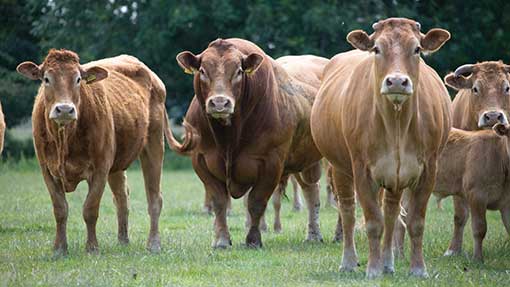Make sure breeding bulls are fit for purpose

Breeding bulls could be failing to meet their full potential as a result of intensive rearing policies, research findings from EBLEX suggest.
| Effects of feeding high levels of concentrates: |
|---|
|
Recent buying trends show there is strong market demand for heavy bulls, but evidence from EBLEX’s bull buyers’ survey suggests these bulls may not be “fit for purpose”.
In fact, 36% of breeding bulls bought in the past five years have either been culled or died, with poor mobility being listed as the main reason.
The average lifespan of a bull is 6.2 years or four breeding seasons, while only one-third last three seasons, according to British Cattle Movement Service records for more than 18,000 bulls born between January 2000 and December 2003.
EBLEX beef and sheep scientist Liz Genever told delegates at the British Cattle Breeders conference in Telford that feeding breeding bulls high levels of concentrate diets could actually be counter-productive to a bull’s performance.
“There is a risk that animals being overfed in preparation for shows and sales will not have adequate semen quality for six to 12 weeks after diet change and there could be long-term implications on mobility and longevity.
“Pedigree breeders are producing big bulls because the market desires them, but it is likely the production system required is having a negative effect on the bull’s ability to get cows in-calf – which is the purpose of buying them,” she added.
See also: Advice on buying a bull
Instead, Dr Genever said pedigree breeders should aim to breed bulls that are “fit for purpose”. She explained that bulls would hit breeding targets if they achieve 70% of mature weight at 18 months of age, which could mean a daily liveweight gain as low as 1.2kg/day.
She said beef breeders could make better use of grass and forage-based diets. “The target should be that concentrates makes up no more than 40% of the dry matter offered to breeding bulls, which will avoid long-term issues.”
Dr Genever said the buyers have a “responsibility” to start asking questions about the management of a bull before purchase to make sure it can do its job.
Breeding specialist Sam Boon, from Signet, said the biggest challenge breeders faced when breeding a fit-for-purpose bull was that it wasn’t necessarily going to be the “most eye-catching”.
As a result he said a different approach to selling and a focus on marketing will be needed.
“Breeders need to consider their communications strategy to build a client base.”
